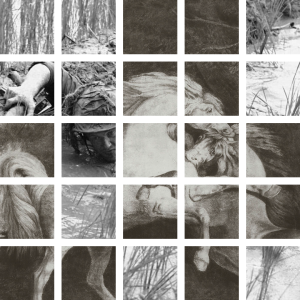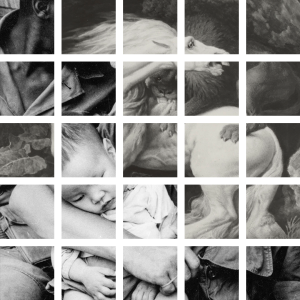Dr. Richard Hudson-Miles
Lecturer in Design Cultures, School of Art, Design, and Humanities.
AREAS OF ALLIGNMENT: ART / PHOTOGRAPHY / FASHION / GRAPHIC DESIGN / PHILOSOPHY / EDUCATION
I am an interdisciplinary researcher and educator, with over fifteen years’ experience teaching the history and theory of art and design. My research operates at the intersections of digital cyberculture, fashion theory, the history of art and design schools, continental aesthetics, radical social theory, and the sociology of education. I am an expert in the work of Jacques Rancière and will shortly be publishing an introduction to his work for Routledge. In addition, I am interested in the relation of art and design to neoliberalism, particularly in terms of education, technoculture, youth subculture, social justice, decolonisation, ecology, and sustainability.
My practice-based research has recently focused on the creation of digital composites from found archival images. I used these images as poetic counterpoints to the essays I published in formal academic journals. These are not illustrations but the dialogic interlocutors of the text which attempts to frame them. An interview of my process has been published by Yale’s Paul Mellon Centre for British Art, filmed during my appointment there as Postdoctoral Research Fellow. https://photoarchive.paul-mellon-centre.ac.uk/groups/the-artist. The latest publication from this series was titled ‘Scenes from the History of the Art School’ and published in the Journal of Visual Arts Practice 21 4 (2022). One of my illustrations was also used for the journal’s front cover (Fig. 1).
A forthcoming essay for the journal Visual Communication, called Do You Know How Animals Die?, uses images of George Stubbs’ animal paintings interspersed with scenes of US military in the Vietnamese jungle in 1968 (Figs 2. And 3). The accompanying essay attempts to narrate the DeleuzoGuattarian concept of becoming-animal from multiple perspectives simultaneously. These include Coppola’s film Apocalypse Now (1979), Herman Melville’s Moby Dick (1851), Alexandre Dumas’s novel (1857) The Wolf Leader, and Keith Thomas’s Man and the Natural World (1983). These artistic meditations, which oscillate between images of nature as a harmonious Arcadian ideal and nature as a bestial green inferno, are set against post-Napalm forest conservation projects in Vietnam.
I am also a member of the artists collective @.ac [www.attackdotorg.com]. @.ac is a non-hierarchical artists’ collective without any permanent members. @.ac projects propose art education as a form of art practice, whilst also representing the textual materials and ephemera of art education as aesthetic objects.
These projects are a contribution to the ‘pedagogical turn’ in contemporary art. I am contracted to write a book on this subject called Educational Aesthetics for Bloomsbury’s Radical Art Radical Aesthetics series https://www.bloomsbury.com/uk/series/radical-aestheticsradical-art/ . This book will be co-authored with Dr. Paul Stewart of MIMA.
Academia.edu profile: http//richardhudsonmiles.academia.edu
ORCiD: https://orcid.org/0000-0002-1055-4459

